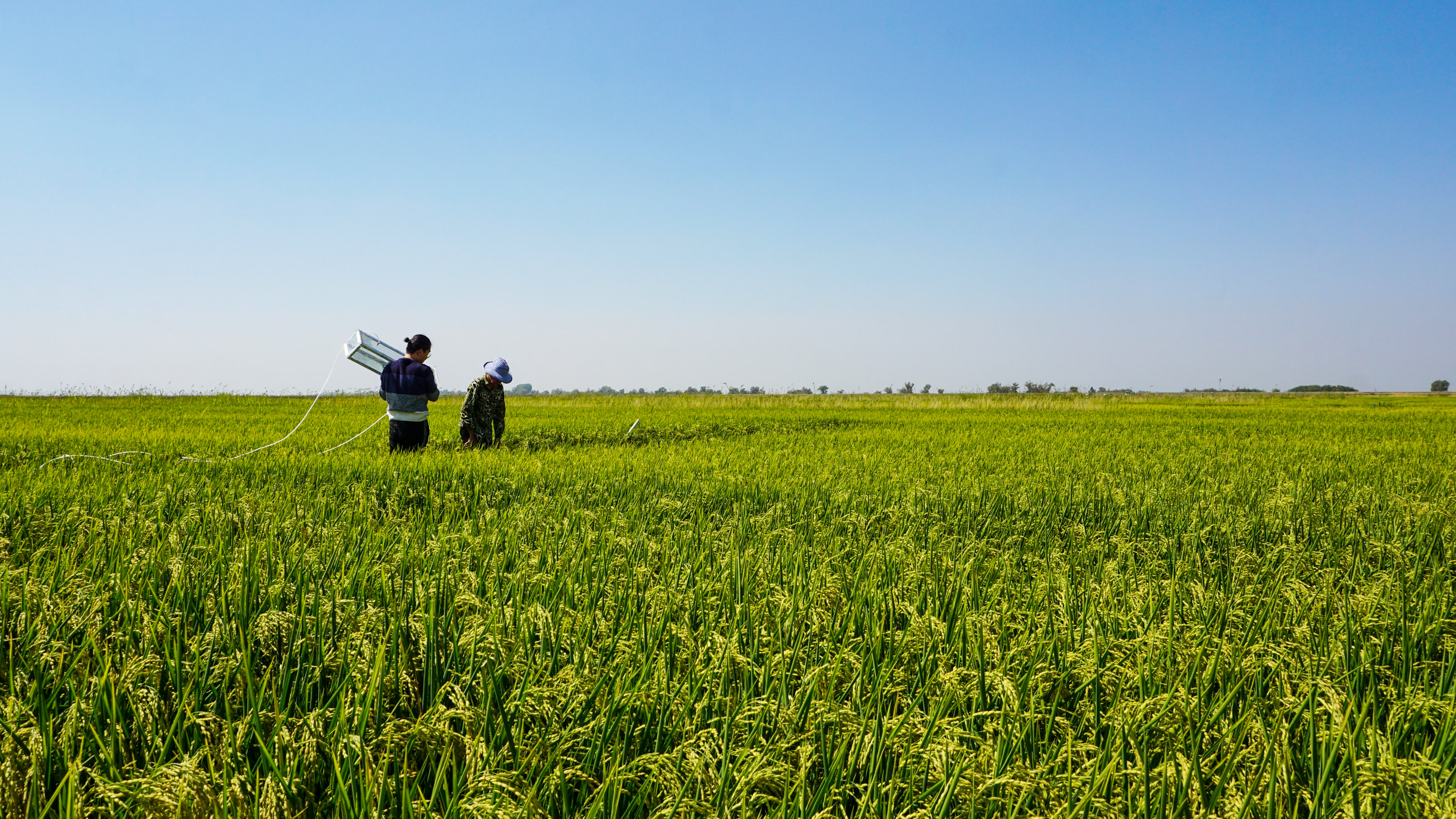This CRISPR pioneer wants to capture more carbon with crops
New research at Jennifer Doudna's institute aims to create faster-growing, carbon-hungry plants using the gene-editing tool.

Plants are the original carbon capture factories—and a new research program aims to make them better ones by using gene editing.
The Innovative Genomics Institute (IGI), a research group in Berkeley, California, founded by CRISPR co-inventor Jennifer Doudna, has announced a new program to use the revolutionary gene-editing tool on plants to boost their aptitude for carbon storage. The initial program will last three years and is funded by an $11 million grant from Mark Zuckerberg and Priscilla Chan's foundation.
The research is part of a growing effort by scientists to find ways to vacuum up the carbon dioxide already in the atmosphere in order to slow climate change. Upping the natural abilities of plants to take up carbon dioxide could, if done on a large enough scale, help push down peak temperatures in a warming world.
While many people associate carbon capture with trees, the IGI research is focusing on agricultural crops. The decision is mainly a matter of timing, says Brad Ringeisen, executive director of IGI. Trees may have long lifetimes that allow them to lock away carbon for decades or even centuries, but most crops grow faster, allowing researchers to speed up the testing process.
One of the primary goals of the IGI work will be to tweak photosynthesis so plants can grow more quickly, Ringeisen says. By altering the enzymes involved, researchers could cut out energy-sapping side reactions, including some that actually release carbon dioxide.
But photosynthesis is only half the story, because the carbon in plants usually makes its way back into the air after the plants are eaten by soil microbes, animals, or people. Keeping carbon in the soil, or finding other ways to store it, is at least as important as capturing it in the first place.
Larger, deeper root systems can help store more carbon in the soil, because if a plant dies and parts of it are deep underground, the carbon in those pieces is less likely to make its way back into the air quickly. Roots aren’t the only possible storage option, Ringeisen says. Modified plants could also be used to make bio-oil or biochar, which can be pumped deep underground for storage.
Optimizing plants for carbon removal will be challenging, says Daniel Voytas, a genetic engineer at the University of Minnesota and a member of IGI’s scientific advisory board.
Many of the traits that researchers want to alter in plants are influenced by multiple genes, which can make precise editing difficult, he says. And while some plants, like tobacco and rice, have been so extensively studied that researchers broadly understand how to tweak them, the genetics of others are less well understood.
Most of the IGI’s initial research on photosynthesis and root systems will focus on rice, Ringeisen says. At the same time, the institute will also work on developing better gene-editing techniques for sorghum, a staple crop that has been particularly tough for researchers to crack. The team hopes to eventually understand and potentially alter soil microbes as well.
“This is not easy, but we’re embracing the complexity,” Ringeisen says. Ultimately, he hopes that when it comes to climate change, “plants and microbes and agriculture can actually be part of the solution, rather than part of the problem.”
Deep Dive
Climate change and energy
The problem with plug-in hybrids? Their drivers.
Plug-in hybrids are often sold as a transition to EVs, but new data from Europe shows we’re still underestimating the emissions they produce.
Harvard has halted its long-planned atmospheric geoengineering experiment
The decision follows years of controversy and the departure of one of the program’s key researchers.
Why hydrogen is losing the race to power cleaner cars
Batteries are dominating zero-emissions vehicles, and the fuel has better uses elsewhere.
Decarbonizing production of energy is a quick win
Clean technologies, including carbon management platforms, enable the global energy industry to play a crucial role in the transition to net zero.
Stay connected
Get the latest updates from
MIT Technology Review
Discover special offers, top stories, upcoming events, and more.